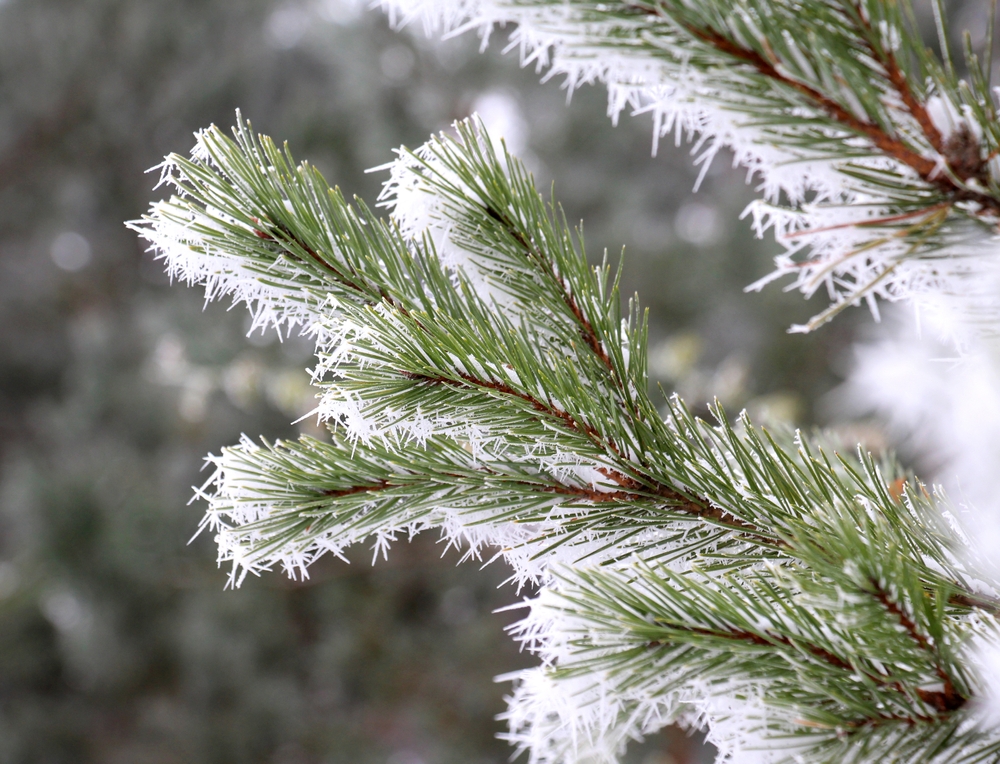
Image Source: Shutterstock.com
You can smell it in the air—the crispness, the falling leaves, the pumpkin spice invasion. Fall is here, and with it comes one of nature’s biggest balancing acts: temperature swings. One week, you’re in shorts; the next, you’re layering up like you’re hiking Everest. But while we humans grumble about it, plants and lawns are out there quietly reacting to every rise and drop in degrees.
Those dramatic shifts between warm days and cool nights don’t just make for cozy sweater weather—they can make or break fall growth in your garden, yard, or crops. Let’s dig into why these roller-coaster temps matter more than you might think.
Warm Days, Cool Nights: Nature’s Tug-of-War
When fall arrives, the days often stay surprisingly warm while nights get brisk. This difference, known as a diurnal temperature swing, might sound harmless, but it has a massive influence on plant growth. Warm days encourage photosynthesis—plants’ way of turning sunlight into energy. Cool nights, meanwhile, slow down respiration, helping plants store that energy instead of burning it all off. The balance between these two processes determines whether plants thrive or struggle as the season shifts.
However, when the swing gets too extreme—say, a 30-degree difference in 24 hours—plants can get confused. They start pushing growth during the day but then shut down at night, wasting energy and sometimes damaging their cells. It’s like flooring the gas pedal and then slamming the brakes—over and over again. Eventually, that stress shows up as stunted growth, weak roots, or even premature dormancy.

Image Source: Shutterstock.com
Root Systems Feel the Chill First
Most people assume the action is all above ground, but when temperatures fluctuate, the real drama happens below the surface. Soil temperature is crucial for root activity, and roots are surprisingly sensitive to rapid changes. During the day, warm soil encourages root expansion and nutrient uptake. But if the temperature drops sharply overnight, that process slows dramatically, leaving plants struggling to absorb what they need.
This back-and-forth creates inconsistent nutrient flow, which can weaken plants just when they should be gearing up for winter. Roots that are exposed to alternating warmth and chill might even develop micro-fissures—tiny cracks that make them more vulnerable to disease or frost damage later on. For gardeners and farmers alike, this means that unpredictable weather doesn’t just affect what you see—it’s quietly influencing what’s happening below ground, too.
The Delicate Balance of Moisture and Evaporation
Here’s a fun fact: temperature swings don’t just play with warmth—they also mess with moisture. Warm daytime air increases evaporation, drying out soil faster. Then, as temperatures drop at night, that moisture can condense on leaves, creating dew that might seem harmless but can lead to fungal issues if it doesn’t dry out quickly. It’s a balancing act that keeps both plants and growers on their toes.
For lawns and fall crops, moisture balance is critical. Too much evaporation and the soil dries out, halting growth. Too much dew or humidity, and diseases like mildew sneak in. These temperature-driven fluctuations turn every morning watering or late-night mist into a strategic decision. Nature, as it turns out, doesn’t make it easy.
Late-Season Growth: A Race Against Time
Fall is the season of urgency in the plant world. With shorter days and dropping temperatures, every hour of light and warmth counts. Plants sense the coming chill and rush to complete growth cycles before winter hits. However, when temperatures swing wildly, this timeline becomes unpredictable. A sudden warm streak might trick plants into thinking it’s still summer, triggering new growth that can’t survive the next frost.
That false sense of security can spell disaster. Young shoots, tender leaves, or late blooms can all fall victim to a single cold snap. Even perennial plants may get thrown off schedule, delaying dormancy and wasting energy. In short: temperature swings make fall growth a high-stakes gamble. For those nurturing lawns or gardens, it’s a reminder that fall isn’t just cozy—it’s competitive.
The Colorful Side of Chaos
If you’ve ever wondered why fall colors look extra vibrant some years, thank temperature swings. Those brilliant reds, oranges, and golds we love are directly tied to how trees handle fluctuating temperatures. When days are warm and nights are cool—but not freezing—it slows the breakdown of chlorophyll (the green pigment in leaves). That pause gives other pigments, like carotenoids and anthocyanins, their moment to shine.
However, if the swing becomes too drastic—like an early freeze followed by a heatwave—trees can lose their leaves before colors fully develop. The result? A dull, short-lived fall display. So while we love the drama of unpredictable weather, too much fluctuation can rob the season of its signature magic. Nature’s palette depends on balance just as much as growth does.
Farmers and Gardeners: The Unsung Meteorologists
Ask any seasoned farmer or gardener, and they’ll tell you: fall weather forecasting isn’t a hobby, it’s survival. Temperature fluctuations can dictate everything from planting schedules to harvest timing. A few unexpectedly hot days might dry out crops ready for picking, while sudden cold snaps can damage unharvested produce. It’s not just about monitoring averages—it’s about predicting the swings.
Smart growers adjust by watching local patterns and adapting quickly. They may mulch to regulate soil temperature, water strategically to offset evaporation, or cover plants during cold nights. The best ones learn to “read” the weather like a language. In many ways, understanding temperature fluctuations is less about science and more about intuition honed by experience.
Your Lawn Feels It, Too
Think your grass doesn’t care about weather? Think again. Fall is prime time for lawns to rebuild after summer stress, but fluctuating temperatures make that job tricky. Warm afternoons encourage new blades to sprout, but chilly nights slow the process, leading to patchy growth. Lawns that get too much warmth may grow quickly but weakly, while those exposed to sudden cold may stall completely.
To keep grass strong, timing matters. Mowing, watering, and fertilizing all depend on consistent conditions, so erratic temperatures throw off the rhythm. When nature can’t make up its mind, homeowners have to step in—adjusting routines to help the lawn stay steady through the stormy shifts of fall. The reward for patience? A resilient lawn that rolls into winter looking like it knows exactly what it’s doing.
The Great Autumn Balancing Act
Temperature fluctuations are part of what makes fall so unpredictable—and so fascinating. They challenge plants, trees, and even entire ecosystems to adapt on the fly. Some rise to the occasion; others struggle. But whether it’s your garden, your lawn, or the forest down the road, everything living is dancing to nature’s ever-changing rhythm.
Have you noticed your plants or grass acting differently during temperature swings? Do you have your own tricks for managing unpredictable fall weather?
Share your thoughts, stories, or gardening hacks in the comments below.
You May Also Like…
9 Fall Garden Pests That Arrive Out of Nowhere
How Root Vegetables Store Nutrients Differently in Autumn
Why Certain Shrubs Should Never Be Fertilized in Fall
12 Herbs That Thrive in Cooler Temperatures
Why Overripe Fruits Invite More Fall Pests
Leave a Reply